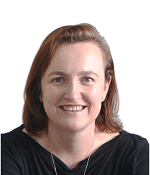Pinpoint the best time to conceive

By Dr Anne Poliness, Medical Director at City Fertility Centre Melbourne.
Knowing when the best time is to conceive each month is an important factor in helping achieve a successful pregnancy. Unfortunately, some patients miss getting this right which is delaying a positive outcome for them sooner rather than later.
Put simply, the timing of conception is critical to success, and by learning to understand your body’s menstrual cycle and the signs of ovulation, it may help you feel more in control.
Ovulation is when the egg is released from the ovary and is a female’s most fertile time of the month.
For conception to have any chance of occurring, the egg and the sperm need to be in the fallopian tube at the same time for fertilisation to take place. However, they both have a short survival window (when unfertilised) hence why synchronising the timing is critical.
Calculate when your fertile window is
The first step in pinpointing when you are ovulating is to calculate exactly when your fertile window is.
To calculate your fertile window manually, you need to know the length of your menstrual cycle (which can vary from 23 to 35 days or longer). A menstrual cycle is the number of days from the first day of your last period to the first day of your next one. You then subtract approximately 14 days.
For example, if your cycle is 28 days, subtract approximately 14 days from the first day of your next period to identify the day you are likely to ovulate (ie Day 14-15).
What to do if your cycles are irregular?
If your cycles are irregular or vary in duration each month, your ovulation date will be difficult to calculate. While ovulation urine tests may be useful, you may want to consider seeking further advice from your GP or a fertility specialist.
Other signs of ovulation
As your menstrual cycle progresses, check your cervical mucus daily. It changes in consistency, depending on the stage of your cycle. Around the time of ovulation, your cervical mucous may become slippery, stretchy and clear. This can be difficult to detect for some women who have only a small amount of mucous, which is still normal.
After ovulation, your temperature can increase by about 0.2C. While you won’t notice this change, you may be able to identify it by using a basal body temperature (BBT) thermometer. This temperature increase is a sign you have ovulated. Releasing an egg (ovulation) stimulates the production of the progesterone hormone, raising your body temperature. Track your temperature each morning for a few months so you can identify a pattern and your likely ovulation date. Temperature change can be difficult to detect for many women and hence frustrating, however some women can detect a temperature rise after ovulation.
Peak fertility window
Your likelihood of conceiving is substantially increased if you have sexual intercourse in the three days leading up to and including ovulation, which are the most fertile days in your menstrual cycle. This is when the egg is moving down the fallopian tube, waiting to be fertilised. The egg can survive for up to 12 to 24 hours after ovulation (most commonly 12 hours), while sperm can survive and fertilise an egg for two to five days in the fallopian tubes (most commonly 48 hours).
I encourage women to have intercourse every day or every second day through their ‘fertile window’. This means that sperm are ready and waiting for the egg when the female ovulates. If you wait until after ovulation to have sex, you will probably miss the opportunity to conceive that month.
When to seek further help
If you have not fallen pregnant after 12 months (or six months if you are aged over 35) of unprotected intercourse with regular menstrual cycles, you should seek advice from your GP or fertility specialist.
For further information visit https://www.cityfertility.com.au/information/pregnancy-planning/fertility-window/
For more information about Dr Anne Poliness, please visit Dr Anne Poliness website at drannepoliness.com.au








